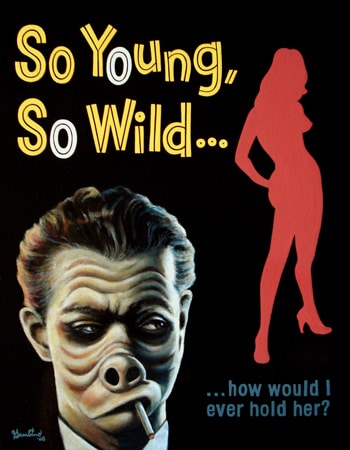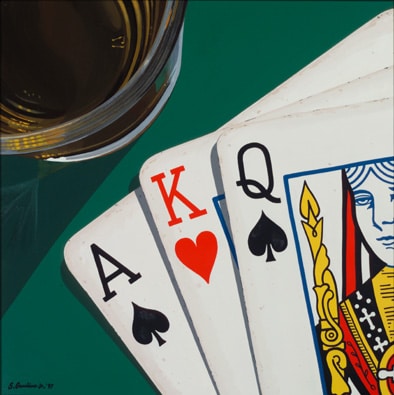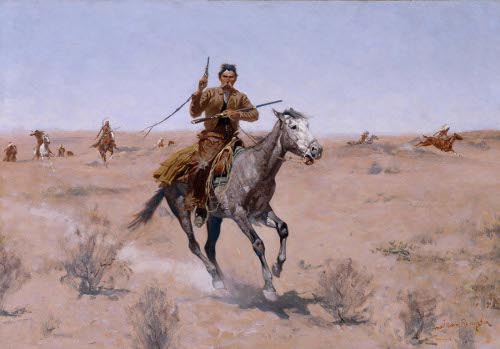
Editor’s note: This post was a collaboration between AoM and Sam Gambino, a manly artist in his own right.
My first exposure to art was in grade school when we had “art time.” My teachers were kind, middle-aged ladies who taught me to trace my hand and add colorful feathers to make a whimsical Thanksgiving turkey to take home to mom and dad. I finger-painted and made colorful Chinese lanterns. There were always big, bold, primary colors. The canvas of choice? Construction paper. While I enjoyed creating this simple, primitive art, I knew that there had to be more to it…that there had to be “real” art out there beyond just my amateur creations.
I then saw the Keep On Truckin’ image with those struttin’, free-wheelin’ bald guys, each with a huge left foot. There was a funny, “cool dude” vibe to the image that I liked.
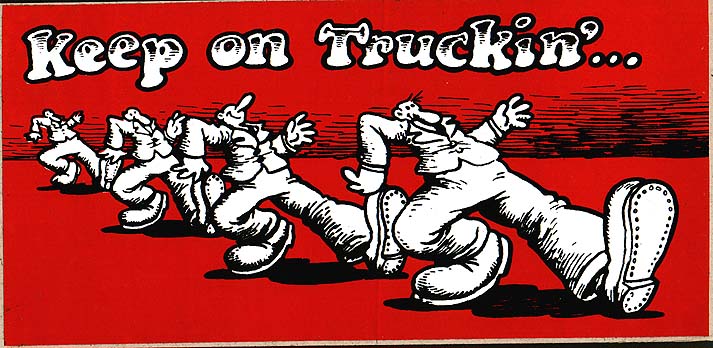
From that point on, I started looking for cool “man art” in everything from TV Guide to humorous Wacky Packages and MAD magazine. As time passed, my search progressed into a quest for different representations of manly art. I noticed the artwork featured in old Perry Mason episodes. It was back there on the wall behind some guy who was either holding a glass of Scotch or lighting a cigarette with the clank of a Zippo. Sometimes, there was violence and despair in the slashes of paint on those abstract pieces. Ironically, though, the finished piece ended as one of sheer elegance and sophistication. I soon realized that manly art didn’t necessarily have to look like a caveman’s dinosaur sketch on a rock wall. I also liked the dark, moody paintings that were featured at the beginning of Rod Serling’s Night Gallery. I guess the darker subject matter represented the “snakes, snails, and puppy-dog tails” aspect of art for me. I later got my hands on some old Man’s Life, Popular Mechanics, and Field and Stream magazines from the 1950s. The illustrations depicted guys who were fishing, hunting, or in gut-wrenching peril out in the wild. With all of these images burned into my mind, my own interpretation of masculine art began to take shape.
I came to realize that in my case, masculine art could encompass one or more of the following: humor, danger, despair, violence, aggression (in depiction or technique), manly activities, and anything else of interest to a man. There was also sophistication, elegance, and beauty. So, who’s to say what constitutes manly art? Below we’ve shared more than a dozen artists, both classic and modern, famous and less well known, some of which have shaped my own art, and all of which have a special quality that Brett and I feel connects with the masculine spirit.
George Bellows (1882 – 1925)
Bellows was a member of the “Ashcan School” — a group of artists who sought to realistically portray the working-class neighborhoods of New York City. Bellows most famously applied this gritty realism to boxing matches — showcased with a dark atmosphere into which the fighters had been placed with bright, forceful brushstrokes.
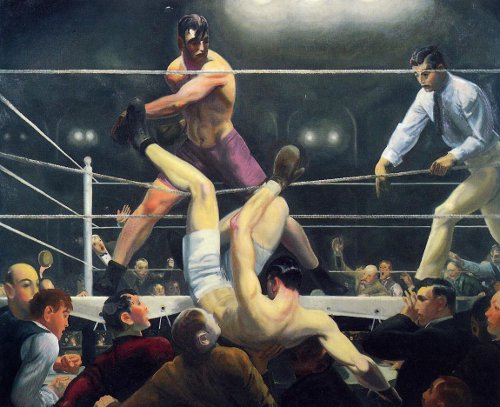
“Dempsey and Firpo” depicts the historic fight between Jack Dempsey and Luis Angel Firpo in 1923. At the end of the first round Firpo knocked Dempsey out of the ring with a right to his chin.
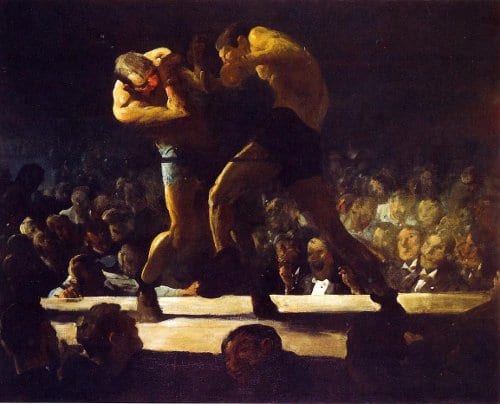
“Club Night”
LeRoy Neiman (1921 – 2012)
LeRoy Neiman first decided to be an artist while serving as a cook during World War II. When he wasn’t making pots of mashed potatoes, he painted murals on the kitchen walls, as well as on sets for Red Cross shows. After the war, he became one of the most popular artists in America, known for his colorful, impressionistic take on what he called scenes from the “good life” — oftentimes athletic events, but also leisure time and celebrities as well.
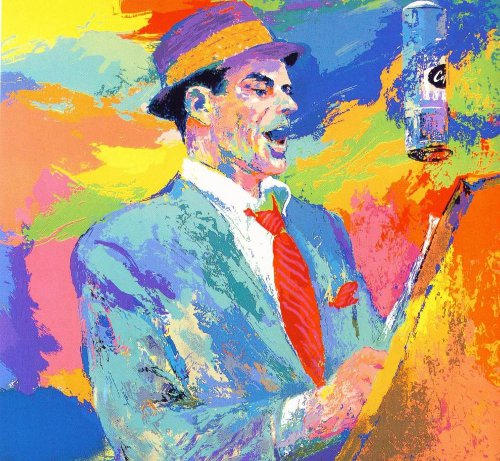
“Frank Sinatra”
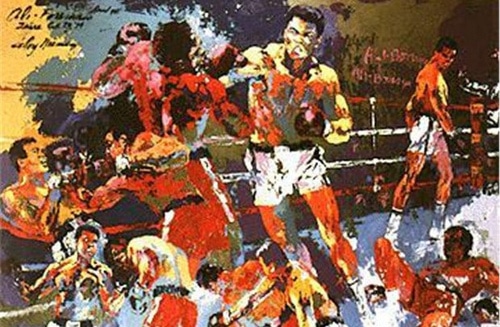
“Homage to Ali” mingles color and texture with raw power, impact, and strength. Neiman successfully depicted pure masculinity using the most elegant of brush and palette strokes.
Jake Weidmann (1984 -)
We featured Jake Weidmann in our So You Want My Job series last fall, and his interview easily became the most popular of all time. Clearly we were not alone in admiring Jake’s disciplined quest to become one of only eleven “Master Penmen” in the world. Jake’s beautiful art combines his exquisite penmanship with evocative imagery — his pieces are truly one of a kind.
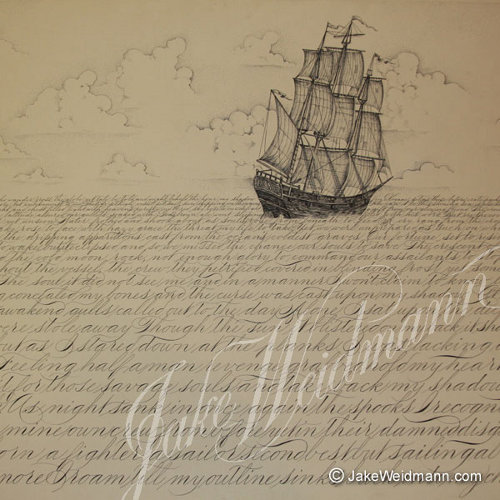
A poem of Eleanor Perry-Smith, rendered in Spencerian script, whispers out an ancient sailor’s tale.

Thomas Moran (1837 – 1926)
Thomas Moran was a member of the Hudson River School, a movement of artists who strove to capture one of the manliest of themes: the sublimity and majesty of nature. Moran’s paintings of the West pulsated with the energy of exploration and discovery, as well as the feeling of man’s smallness besides such awesome natural features. The inspiration that such scenes can impart is palpable.
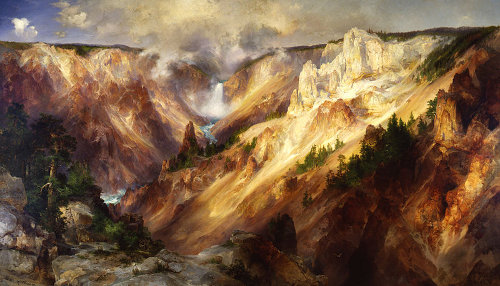
“Grand Canyon of the Yellowstone” — American landscape painters helped inspire the movement to preserve the most beautiful parts of the country’s wilderness and to create a national park system in order to do so. The sketches made by Thomas Moran when he accompanied a geological survey team into the then unknown Yellowstone area were later used to convince Congress to turn Yellowstone into a national park.
Roy Lichtenstein (1923 – 1997)
Lichtenstein was an American pop artist who became a leading figure of the new art movement of the 60s. He drew inspiration from comics and advertising.
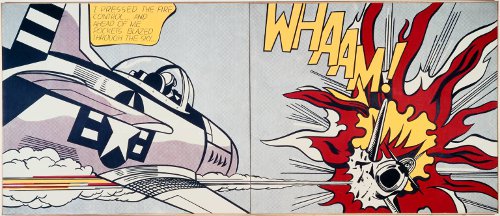
His most famous work, “Whaam” was taken from DC Comics’ “All American Men of War,” published in 1962.

Lichtenstein took one of the simplest of hardware store items and turned it into art for his painting “Electric Cord.” It’s so simple, bold, and shameless that no background color is needed. Interestingly, “Electric Cord” was lost for 42 years after its owner sent it out to be cleaned and it never returned. It was just discovered in a warehouse last year.
C.E. Monroe
Monroe’s art appeared on numerous covers of Field and Stream magazine during the 1950s and 1960s. He also created classic ad art for Winchester rifles and Savage Arms during those years. His work respectfully depicts men at work and play during a period of the 20th century when men were unapologetically depicted as not only strong, but as living examples of class and style.

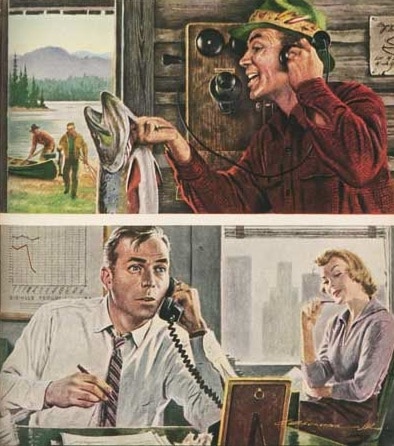
Frederic Remington (1861 – 1909)
The preeminent artist of the Old West, Frederic Remington is most famous for his depictions of cowboys and Native Americans. Unlike his contemporaries, he focused on the men and animals of the West, rather than the landscape. He also painted military scenes; commanders of the Western Army would invite him into the field to do their portraits. He even went along with Theodore Roosevelt, an admirer of his work, as a war correspondent during the Spanish-American War, and captured the Rough Riders charge up San Juan Hill.
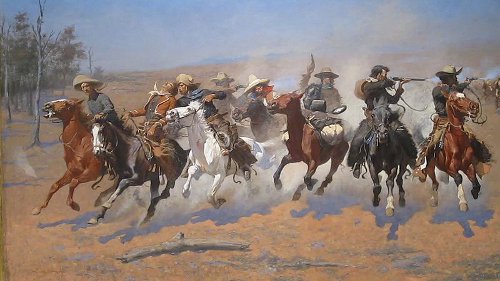
“Dash for Timber”
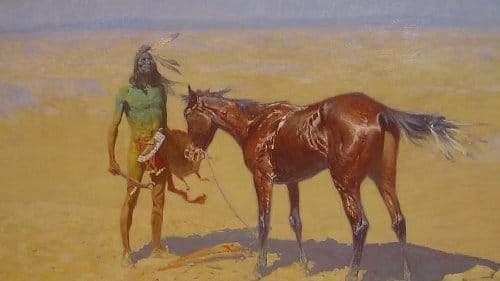
“Ridden Down”
Diego Rivera (1886 – 1957)
Rivera was a controversial Mexican artist — both praised for his rich, storytelling murals and frescoes, and criticized for his left-leaning politics. He often depicted the heroism and struggle of the worker, and preferred public murals as his medium for their ability to bring art to the masses.
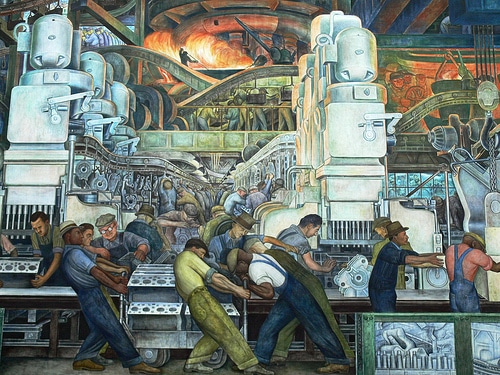
Rivera considered one of his finest works to be “Detroit Industry.” A series of 27 fresco panels, covering 447 square yards, it was completed with the support of Henry Ford between 1932-1933 for the Detroit Institute of Arts. In the epic mural, he expertly captured men of differing skills and ethnicity all toiling together in a cavernous automobile factory to achieve the same end result: putting America on wheels and down the road. One can almost smell the oil, soot, and metal dust when standing in front of this huge, striking snapshot of a day in the life of 1930s industrial America.
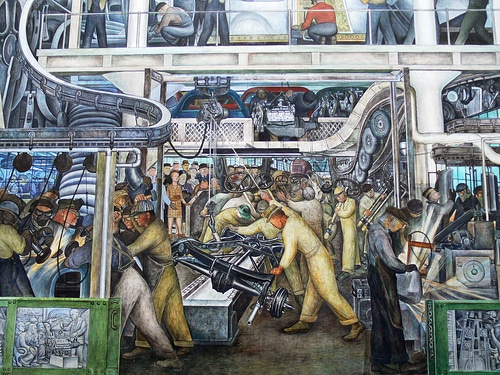
Ernie Barnes (1938 – 2009)
Ernie Barnes was one interesting cat. Not too many men become both an NFL football player and a renowned professional artist. Growing up under Jim Crow laws in North Carolina, Barnes had to study art only in books; his race barred him from museums. Bullied in high school, he got involved in athletics when a masonry teacher and weightlifting coach encouraged him to build his body. By senior year he was the captain of the football team, and went on to play in college and then professionally for the Colts, Titans, Chargers, and Broncos. He would sometimes get in trouble with his coaches for sketching during team meetings and even timeouts during games. After his playing days were through in 1965, his art finally took center stage — the league actually decided to keep him on as a salaried player, but commissioned him to do paintings rather than be on the field. Barnes’ art career took off, and he spent the next decades doing sports-themed pieces, depictions of life in black communities, and even album covers.
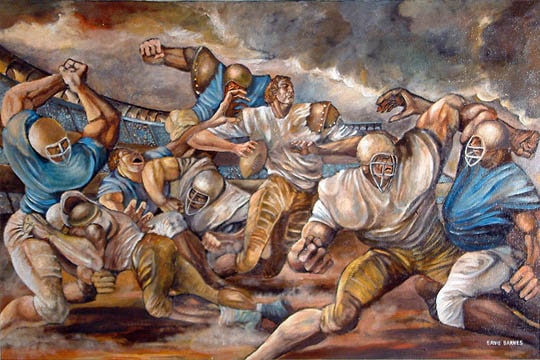
Barnes credited his football playing career with greatly influencing his work; during games he was hyper-aware of how his body was moving and took notes on the feelings, attitudes, and expressions these movements created alone and as he collided with others. In “Sunday’s Heroes” he depicts determination, danger, competition, and camaraderie, all with paint and brush. The characters actually appear to be moving on the canvas.
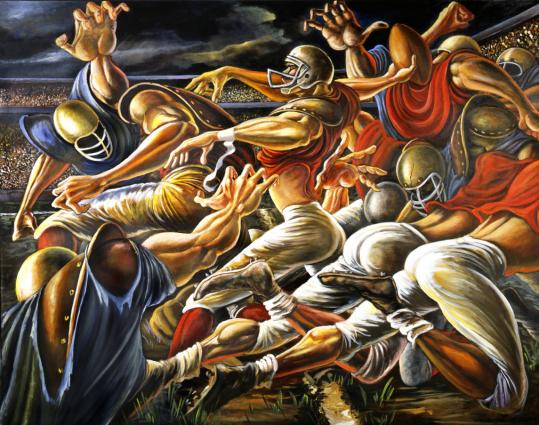
When Barnes was eighteen he visited the recently de-segregated North Carolina Museum of Art. When he asked the docent where he could find “paintings by Negro artists,” she replied, “Your people don’t express themselves that way.” Twenty-two years later he was given a solo exhibition at the same museum, hosted by the governor of North Carolina.
Nicholas Coleman (1978 – )
Nicholas Coleman is a modern artist I discovered because he follows the Art of Manliness on Twitter. I really dig his work, which aims to preserve the history of the American West and reminds me of my grandfather. Coleman says he works to give his pieces a sense of realism as well as a “certain amount of spontaneity and a slight impressionistic feel…that lets the viewer participate in the work.” He endeavors to create “a connection between his paintings and the observer by invoking a mood that the viewer can walk into.”

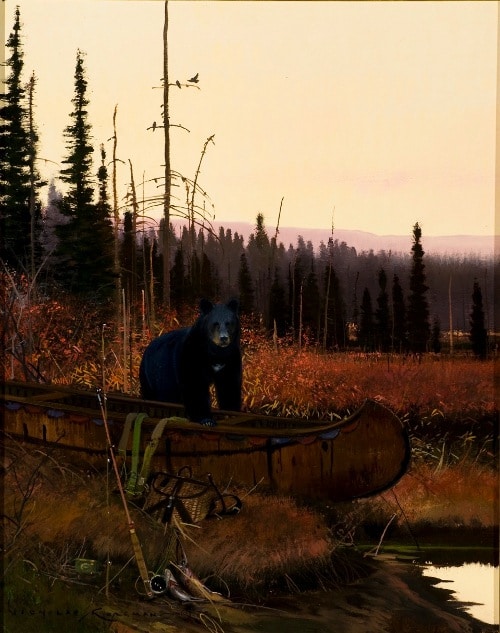
Jim Flora (1914 – 1998)
Jim Flora was a children’s book author and illustrator, a commercial illustrator, and a fine artist, but is most well known for inking the covers of cool jazz and classical LPs in the 1940s and ’50s. He infused fun, mischief, music, and movement into his work with playful abandon.
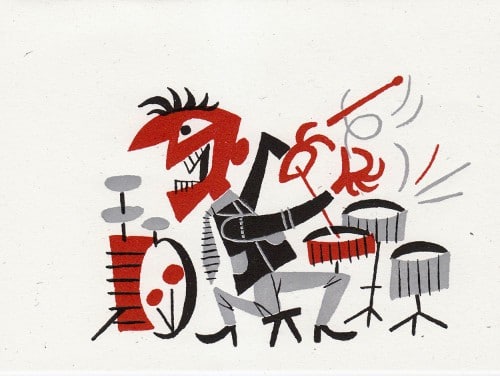
This piece is from his “Dig You Later” series of illustrations created in 1955. Each illustration features a “dude” who’s having a ball while creating the coolest sounds around with the jazzy instrument of his own choosing.
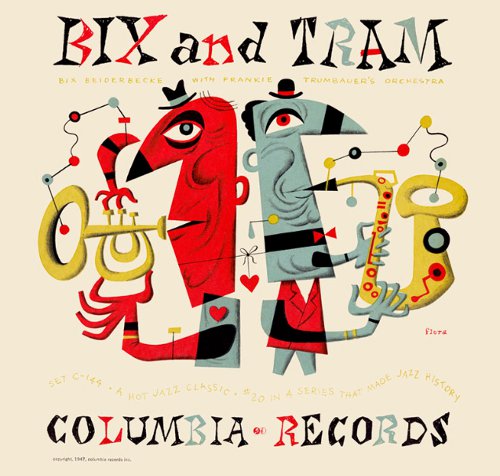
Both pieces used with permission. © The Heirs of James Flora; courtesy JimFlora.com.
C.M. Coolidge (1844 – 1934)
How could a list of manly art be complete without some dogs playing poker? Commissioned in 1903 by Brown & Bigelow to advertise cigars, the sixteen-part series of oil paintings was done by C.M. Coolidge, an artist with little formal training. The pieces feature anthropomorphized dogs smoking cigars and drinking while playing high-stakes poker. The painting “A Friend in Need” even depicts “cheating for charity.” Should a man compromise his character to help the underdog? Evidently, Coolidge thought so. Either way, this series is timeless and isn’t expected to fade away for at least another one hundred and nine years.
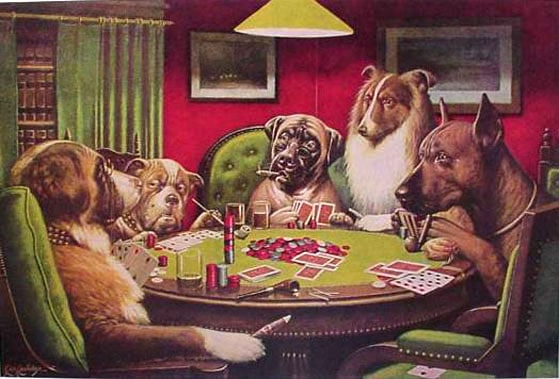
“A Bold Bluff”
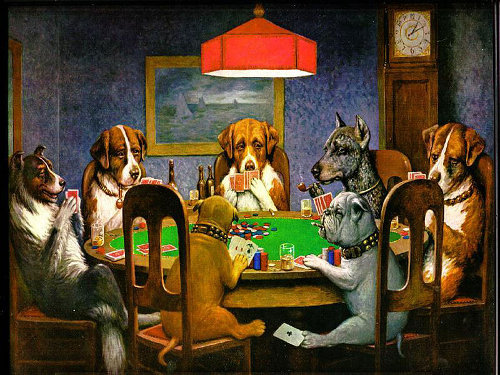
“A Friend in Need”
Vincent van Gogh (1853 – 1890)
The famous Van Gogh may not be the first artist that leaps to mind when you think of manly art, but his style had rough beauty that was both eloquent and often rather masculine.
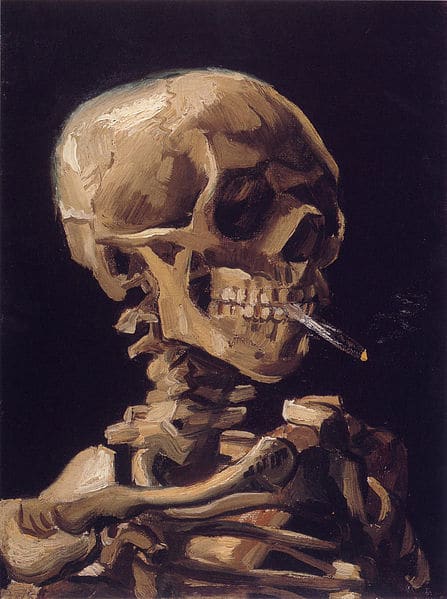
“Skull With Burning Cigarette”
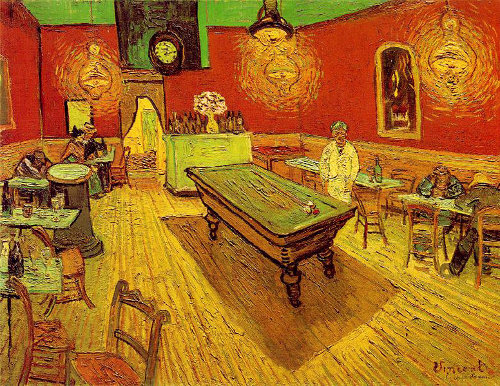
Van Gogh’s subject matter covered all bases, but one of my all-time favorites of his is “The Night Cafe.” There are beautiful brush strokes and colors, but it’s unmistakably masculine. I can almost smell the whiskey and pipe tobacco when I look into this painting with its parlor of tables and billiard balls waiting for the break.
Norm Saunders (1907 – 1989)
Saunders illustrated for pulp magazines, comic books, trading cards, crime novels, and men’s adventure magazines, most notably beginning in the 1930s, and continuing through the 1960s. He was a master at depicting a moment of desperation or distress between shady or campy characters, with his work being marked by a masculine and even risque edge (he was known for illustrating beautiful dames). Saunders could arguably be categorized as the “Mickey Spillane” of the art world.
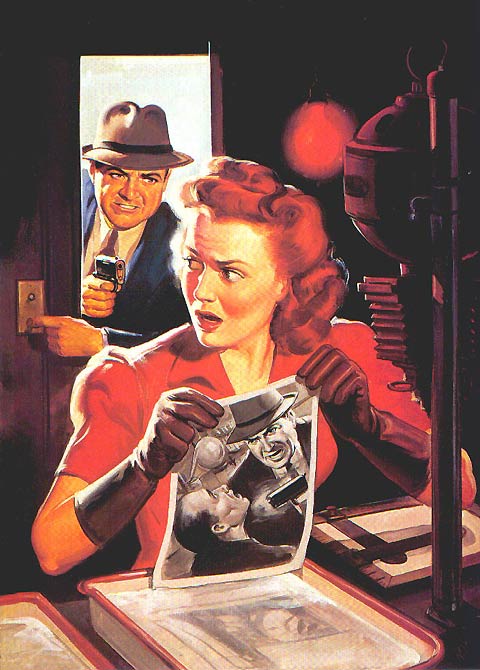
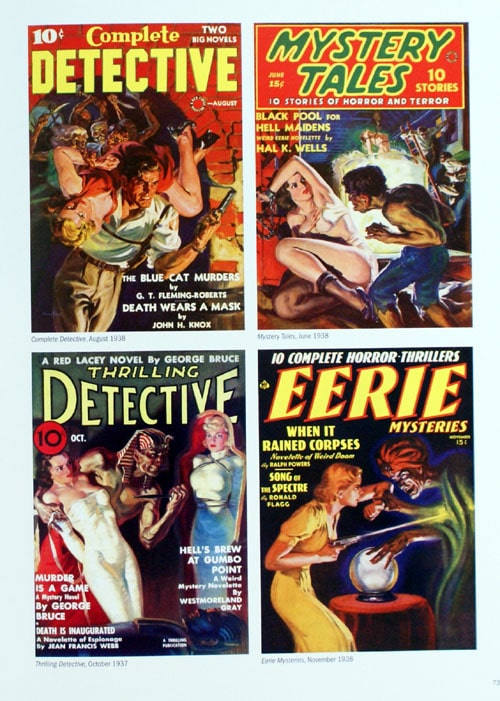
Robert Williams (1943 – )
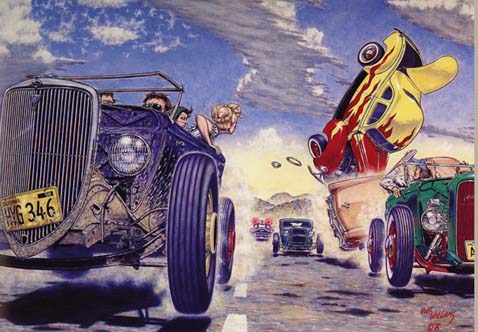
Robert Wood (1889 – 1979)
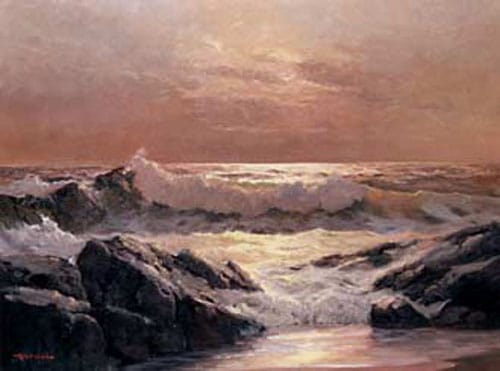

Arnold Friberg (1913 – 2010)
Friberg studied with Norman Rockwell at the Grand Central School of Art and his paintings have the same kind of idealized richness that the latter was famous for, but with a little more realism and ruggedness. During WWII, he was given the chance to be a captain and stay stateside illustrating recruitment posters, but decided to go to the front instead, though he still employed his artistic skills there in drawing maps. He also spent three years working on the pre-visualization posters for Cecille DeMille’s The Ten Commandments.
We didn’t hear back from the Friberg estate with permission to reproduce a couple of his paintings in time for the publication of this article, but you can see a whole bunch of his work on this article we did a few years ago dedicated to him.
Sam Gambino
